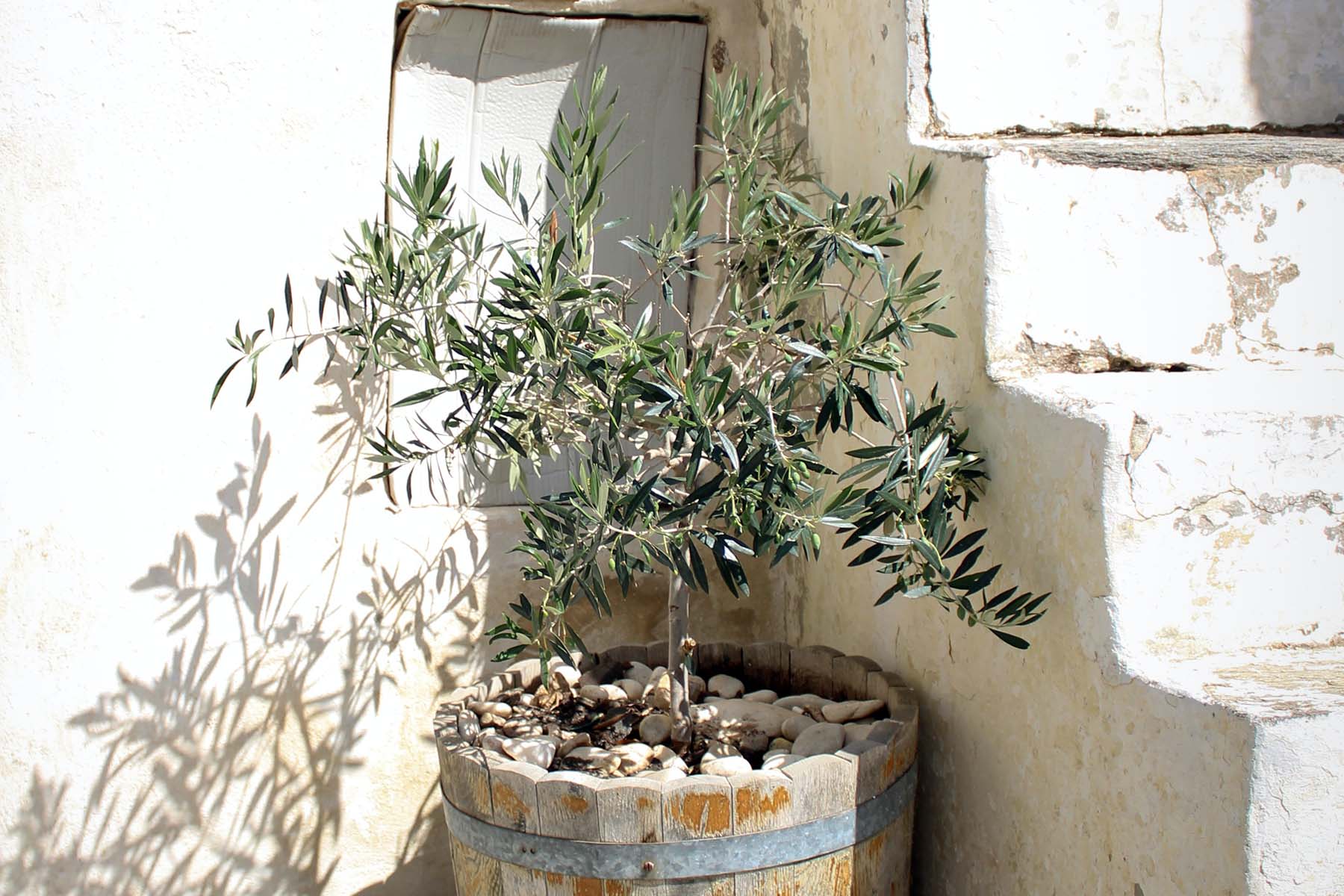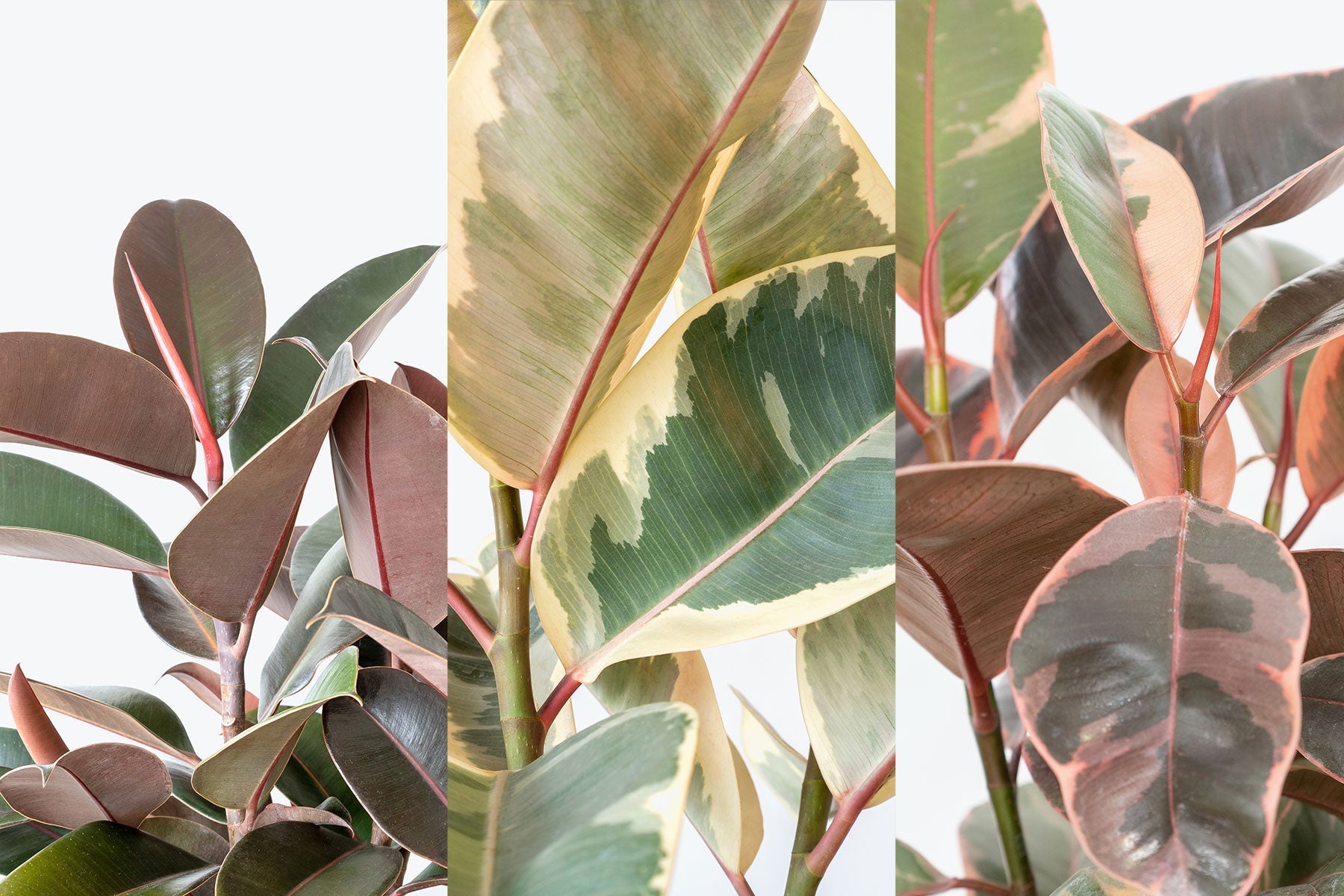
How to Take Care of Your Olive Tree
Step aside Fiddle Leaf Figs, you've got some competition! If you are looking to add a touch of the Mediterranean to your home, look no further than the stunning, and popular, Olive Tree. Known in Ancient Greece as a traditional symbol of harmony, wisdom, and triumph, the narrow, sage green leaves and pale stems create a simple and elegant statement in any home. Even though there are plenty of Olive Tree varieties that exist, the most popular species for growing indoors is the Dwarf Olive Tree, since it doesn't reach heights higher than 6 ft., unlike those that can grow upwards of 30 ft. Now, don't go purchasing one of these guys if you are looking for fruit, because they generally don't produce actual olives, but this doesn't diminish their beauty.
△ 10" Olive Tree
The natural habitat of these ancient plants resides in the dry regions of the Mediterranean, including Spain, Greece, and Italy, or even in some Californian gardens. From this, we can deduce that they will do just fine in our dry, Northern homes with central heating and air conditioners sucking any of the natural moisture and humidity out of the air around us. Now we can begin to understand why they are so popular, since most other plants require some level of humidity. The main thing that these trees need is light, and a whole lot of it at that, which is what makes them rather difficult houseplants here in Canada.
🏡
Unlike almost all other houseplants, this means that they can even handle being near air vents, fans, and radiators, the plant will feel right at home. Plus, no misting required!
One thing to note with Olive Trees is that they are not the easiest houseplants. They will not survive indoors indefinitely, just like Citrus Trees, so it is very important that they spend a portion of the year outdoors, in the spring and summer months. This is mostly due to how much light they need, which is up to 6-8 hours a day of strong, direct sunlight, something most homes, apartments, or condos do not naturally provide. Along with high light levels, they also require good airflow to maintain their health, hence why it is recommended that they are moved between the indoors and the outdoors throughout the span of year, but we'll get in to that more later on.
Despite the fact that they are a relatively slow-growing tree, they are definitely worth owning because their beauty creates a statement that most other houseplants just can't do. With dainty leaves, not reaching more than half an inch wide, they are incredibly stunning, it's just their care that they are a little finicky with, but let's cover that now.
Light Requirements
Sun, sun and more sun! There are no if's, and's, or but's, Olive Trees need as much direct sunlight as possible in order to stay healthy and happy, they are native to the hot, dry climate of the Mediterranean after all. Indoors, there just isn't enough light to support them throughout the year, which is why we mentioned above that they should be moved outdoors once the days and nights start to warm up.
There really aren't any lower light locations since they need as much direct sunlight as possible. Indoor, bright light plants require sunlight to assume their full potential, which means they need to be right next to a sunny window with at least 6 - 8 hours of direct, bright sunlight a day. Avoid letting the leaves touch window glass, which can intensify the sunlight and burn them. A South-facing window would be best, but if you only have an East or West-facing window, consider investing in grow lights to supplement for the lack of light in the lower light portion of each day.
☀️
If you do not have enough sunlight, your tree will most likely start to drop its delicate leaves, which is definitely something we don't want to happen!
If you choose to keep your plant outdoors during the summer, which we recommend, please refer to our When & How to Transition Your Plants Outdoors for the Summer blog post. It is important to give your plant time to transition because, just like moving to your home can be a shock, moving a plant from indoors to the outdoors in direct sun can also shock your plant, causing leaf burn or loss. It is also important to not put your plant out too early, but you can read all about that in the article linked. Even if there are some leaves that drop, once the plant adjusts to the new location that it loves, receiving 6-8 hours of sun, it should begin to grow more leaves on the stalks that are left behind.
✂️
Feel free to prune the tips of your tree it you want it to stay bushy and branch more, or if it is threatening to outgrow its space! Removing some of the branches will also keep the tree relatively open in the center, allowing for plenty of light and air to circulate through it. Olive Trees are often grown as bonsai's as well, if you wish to investigate more on that to do so with your own.
The high amount of light that they require is why they generally don't fare as well indoors year-round, because they truly need those 6-8 hours of sun a day. While it is ok that you keep your Olive Tree inside the home, they adapt much better to the outdoors during the warmer months and often perform better as well. Raising them indoors means that you might have to be a more watchful caregiver, moving your plant around the house to accommodate its need for sun. When kept outside, towards the end of the season, transition the tree back inside before it gets too cold.
Watering Requirements
Olive Trees actually don't like constantly moist soil and prefer it more on the dry side, with low to medium watering needs, just like in their natural habitat! While we want to avoid letting the soil dry out completely, we also want to avoid overly saturated soil. They need to be watered when the soil is dry to the touch so it is safer to give the soil a check before you water again. To check the moisture levels, push your fingers into the soil, if it feels damp, wait a few days and then check again.
🚰
These instructions are mainly for more mature specimens, younger trees should be watered when the first 1-2 inches of soil are dry to the touch. Once an older, more mature tree is fully situated in its pot, it is best to ease back on the waterings and wait until the soil is mostly dry, watering deeply and fully when it is time. They can sometimes go down to once a month, depending on the time of year and maturity.
Even though Olive Trees are rather drought tolerant, when it does come time to water, water your plant deeply, so that all of the soil is moistened and not just the top layer of soil. If this is done right, there should be water coming out of the drainage holes at the base of the pot, which is why we always recommend potting your plants in pots with drainage holes, so there is never the chance of water building up at the base of the pot. Feel free to read more about our watering methods in our Watering Guide.
△ Olive Tree Leaves
This is why it is recommended to keep them in well-draining soil, such as cactus soil mixed with perlite, orchid bark, or lava rock - perlite is recommended because it is lighter and Olive Trees are frequently moved indoors and outdoors, depending on the season. With this type of soil, it won't stay as wet as long as soils that are on the denser side, meaning that there will be a lot more airflow for the roots. Regular indoor potting soil can be used, but you will have to keep an eye on your watering, making sure to check if the plant actually needs to be watered or not.
📋
If it appears that the root ball is filling up the entire pot, or the water never seems to penetrate the soil, it may be time to repot! You may want to plant your tree in a larger pot, but not too large, so that you don’t have to repot it so quickly down the line. Plant it in the new container and add enough soil so you can place it at the same depth as it was in the nursery container.
Olive Trees grow quite slowly in general, especially those kept indoors, but over the winter months they will most likely go dormant, so avoid giving your plant too much water too often during that season. Although they are slower growers, you want to make sure that the container is a couple inches larger than the root ball on each side to allow the roots room to expand. Planting in a larger container will also mean you’ll have to re-pot your tree less often.
🚿
Feel like spoiling your plant a little bit? Shower it off once a month, washing off all of the leaves (both tops and undersides) and stems, as well as watering the soil. This will wash off any pests that could potentially accumulate as well as washing off any dust or debris.
Humidity
Unlike almost every other houseplant, Olive Trees actually do not need additional humidity and will do just fine in our homes, which is one reason why they are so popular! They grow in the Mediterranean so they can tolerate the dry air and won't need to be misted to stay happy. Even though they love the warmth and dry air, protect your tree with a little shade during extreme high temperatures
Fertilizing
Olive Trees will benefit from regular doses of fertilizer throughout the growing seasons of spring and summer. You can use a generic, balanced houseplant fertilizer (a 10-10-10 with micronutrients, for example), feeding twice a month April through September, following the product instructions and diluting it as they say so as not to give the plant too much food. Then, feed the tree once a month in the fall and winter months.
Toxicity
Olive Trees are non-toxic to ingest, by both pets and people! Although it is always recommended to keep your pets and children from ingesting any houseplants, you can feel comfortable and safe having these beauties around your home in the potential case where someone feels like having a snack.
Common Pests & Problems
Although their care guidelines are rather short and simple, there are some issues that can plague Olive Trees. The main care step to achieve is correct lighting, since they have such high light needs, but it is also important to keep an eye out for the following:
Scale:
If you notice a sticky, honeydew-like sap on the bottoms of leaves and brown “bumps” along the stems, you may be experiencing scale. Their damage includes yellowing and damaged leaves (old and new) with unhealthy new growth. Remove any bugs with a soft cloth dipped in rubbing alcohol and then treat the whole plant with insecticidal soap, just make sure you treat your plant every 10 days until there are no more signs of them. Routinely check the undersides of leaves for these nuisances. You can read more about how to get rid of scale here.
Leaf drop:
This can be a result of many issues, including the following:
- Watering issues: Be wary of keeping the soil too dry or too wet, make sure to follow our watering guidelines outlined above, depending on the age of the plant of course.
- Insufficient light: Olive Trees can only live in bright light, they won't be able to survive in lower light spaces, unfortunately.
- Improper nutrients: They still need food, like most living creatures, so make sure enough is being provided! If they are being fed too much, they may need to be repotted into a new home to avoid burning the roots further.
- Root-rot: This will occur if overwatering has occurred, so make sure the plant is only watered as we describe above.
- Transition stress: Like Citrus Trees, Olive Trees will go through a period of adjustment as they adapt to your home, so give them some time and make sure all other conditions are perfect for their needs.
Final Notes
Try not to fret too much over your plant if it starts to drop leaves, just give it time to adjust to your home or analyze the situation to see what is going on. Pick a warm, sunny window and keep your plant there all winter, then, when the days and nights start to warm up again, transition your plant outdoors and watch it go to work. Most of the time, Olive's will recover, you will just have to be patient and follow the regimen that they need.








